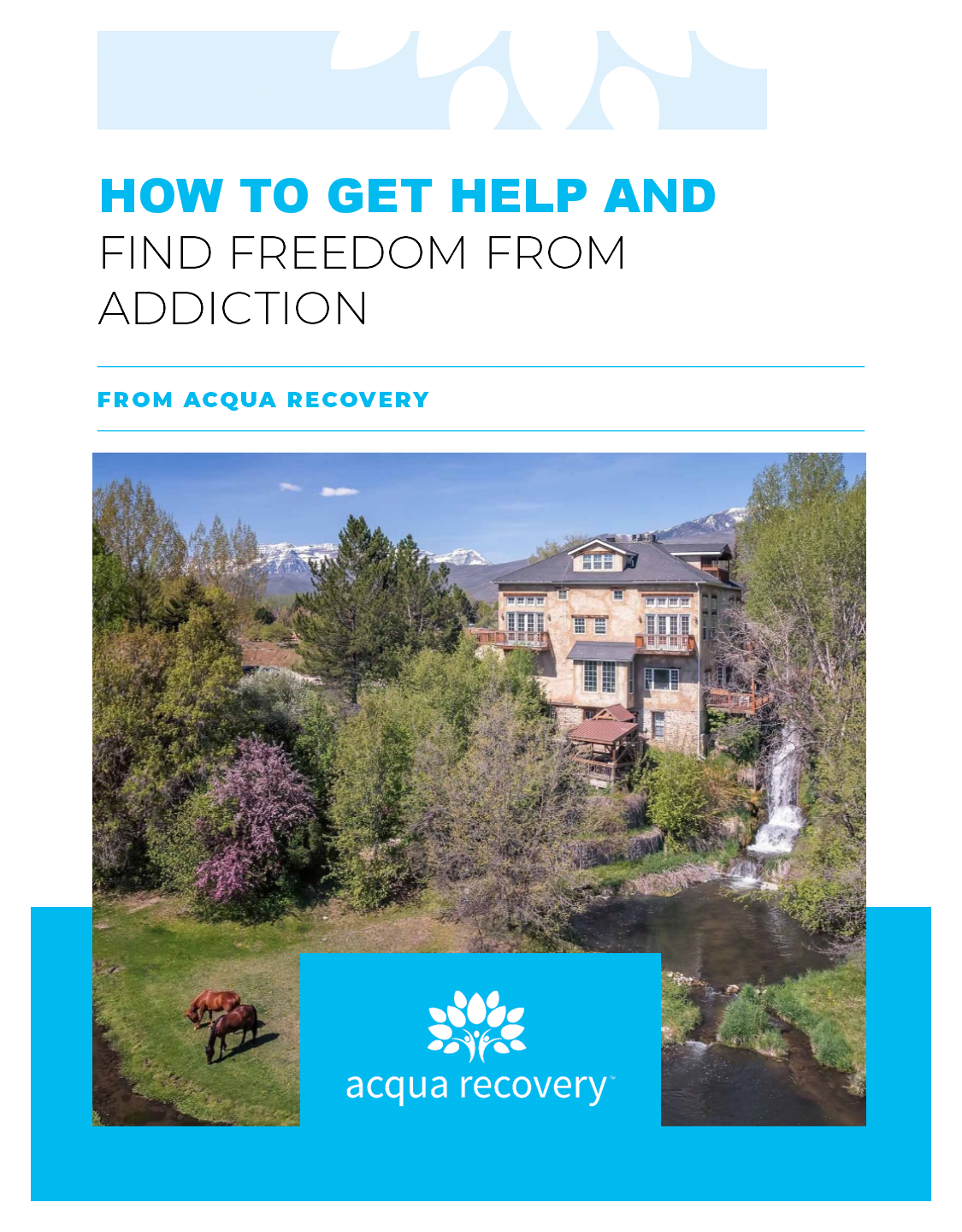Fentanyl Rehab in Utah | Fentanyl Addiction Treatment Center
Your Path to Recovery with Acqua
Fentanyl rehab in Utah provides life-saving treatment for individuals struggling with one of the most dangerous synthetic opioids in the United States. At Acqua Recovery, our fentanyl addiction treatment program combines medically supervised detoxification, evidence-based therapy, and comprehensive aftercare to address the unique challenges of fentanyl dependence.
Fentanyl Utah statistics are alarming—the synthetic opioid is 50 to 100 times more potent than morphine and is responsible for a growing number of overdose deaths statewide. Whether fentanyl dependence developed through prescription use, contaminated street drugs, or intentional misuse, professional fentanyl rehab offers the safest path to recovery. Our Utah-based treatment center specializes in opioid addiction, providing the medical expertise and compassionate care necessary to overcome this life-threatening addiction.
What is Fentanyl?
Fentanyl is a powerful synthetic opioid. It’s 50 to 100 times more potent than morphine, and it’s often prescribed for severe pain management. Unfortunately, due to its potency, it’s also responsible for a growing number of overdose deaths. An individual who is addicted to fentanyl is subject to severe physical and emotional consequences. Recognizing the signs of fentanyl addiction and understanding the risks is the first step toward seeking help.
The Fentanyl Crisis in Utah: Why Specialized Rehab Is Critical
Fentanyl has become the deadliest drug threat facing Utah communities. According to the Utah Department of Health and Human Services, fentanyl-involved overdose deaths increased by over 900% between 2015 and 2022, with synthetic opioids now responsible for the majority of overdose fatalities statewide.
The dangers of fentanyl addiction extend beyond potency. Just 2 milligrams—an amount equivalent to a few grains of salt—can be lethal. Counterfeit pills containing fentanyl are increasingly common throughout Utah, with individuals unknowingly consuming the synthetic opioid when using what they believe to be prescription medications like oxycodone, Xanax, or Adderall.
Fentanyl rehab in Utah must address several unique treatment challenges:
- Severe Withdrawal Symptoms: Fentanyl withdrawal is often more intense and prolonged than other opioids, requiring medical supervision and medication-assisted treatment to manage safely.
- High Relapse Risk: The extreme potency of fentanyl creates powerful drug-seeking behavior and cravings that persist long after physical withdrawal ends.
- Contamination Concerns: Many individuals enter fentanyl treatment after unknowingly using drugs contaminated with the synthetic opioid, requiring education about harm reduction and safe practices.
- Co-Occurring Mental Health Issues: Fentanyl addiction frequently occurs alongside trauma, depression, anxiety, or other substance dependencies, necessitating integrated dual diagnosis treatment.
Specialized fentanyl rehab provides the comprehensive medical and therapeutic support necessary to address these complex treatment needs. At Acqua Recovery, our opioid treatment program specifically targets synthetic opioid dependence with evidence-based protocols designed for fentanyl’s unique challenges.
Signs and Symptoms of Fentanyl Abuse and Addiction
As with any drug addiction, there are often a number of signs that someone needs to seek treatment for their substance abuse. These can range from mild to severe.
Severe cravings
- Loss of interest in hobbies or life activities
- Extreme fixation on securing more drugs
- An increase in the amount used to get high
- Neglecting one’s responsibilities in favor of using drugs
It’s also important to know the symptoms of fentanyl use, which may include:
- Anxiety
- Extreme mood swings (euphoric to distressed)
- Swollen hands and/or feet
- Nausea and/or vomiting
- Loss of consciousness
- Dizziness
- Fatigue
- Rapid heart rate
- Inability to focus
- Confusion
- Diarrhea
- Fentanyl Withdrawal Symptoms
As a person becomes addicted to fentanyl, they pass the point of being able to withdraw from it without any effects. For this reason, fentanyl detox is often best done in a qualified facility that has staff knowledgeable in the drug and compassionate care.
Symptoms of withdrawal may include:
- Runny nose
- Fatigue
- Fever
- Diarrhea
- Cramping
- Aches and pains
- Dilated pupils
Because everyone is different, so are their symptoms of withdrawal. Some may need more help than others to go through the detox process. However, because it can be dangerous for some, it’s important that it’s carried out in a treatment center under the care of a physician.
The Benefits of Fentanyl Addiction Treatment in Utah
Utah offers a unique environment for those seeking fentanyl treatment. The state’s natural beauty, combined with advanced treatment facilities, creates an ideal setting for healing and personal growth. Here are a few key reasons to consider Utah for fentanyl rehab and treatment:
Utah is home to leading addiction treatment centers like Acqua Recovery, which offer cutting-edge, evidence-based approaches to addiction recovery. Clients receive comprehensive, individualized care from experienced professionals in a supportive and nurturing environment.
Utah boasts a robust recovery community, with numerous support groups, sober living facilities, and aftercare resources available to those in recovery. This strong network provides invaluable support for individuals as they navigate the challenges of maintaining sobriety.
The picturesque landscape of Utah offers a peaceful and serene environment, conducive to the healing process. The natural beauty encourages reflection, relaxation, and a renewed connection with oneself.

Acqua Recovery’s Fentanyl Addiction Treatment Approach
At Acqua Recovery, we understand that fentanyl addiction is a complex issue requiring a multifaceted treatment approach. Our comprehensive programs address the whole person, focusing on the mental, emotional, and physical aspects of recovery. Here’s an overview of our fentanyl addiction treatment approach:
Personalized Treatment Plans
Each client receives a thorough assessment to identify their unique needs, challenges, and goals. Additionally, different substance use disorders require individualized solutions. For instance, treatment plans will vary for heroin vs. fentanyl, alcohol, or cocaine – therefore, we strive to personalize every step in your specific healing program. Based on this information, we create a customized treatment plan incorporating a variety of evidence-based therapies and supportive services.
Medically Supervised Detox
The most crucial first step in recovery is detox because it allows the body to rid itself of fentanyl and other toxins. Acqua Recovery offers medically supervised detoxification to ensure clients’ safety and comfort while managing withdrawal symptoms.
Comprehensive Therapies
Our treatment programs integrate a range of therapies, including Cognitive Behavioral Therapy (CBT), Dialectical Behavior Therapy (DBT), Motivational Interviewing, and group therapy. These evidence-based approaches help clients address the underlying issues contributing to their addiction and develop the skills necessary for lasting recovery.
Holistic Care
At Acqua Recovery, we believe in treating the whole person, not just the addiction. Our holistic approach incorporates services such as nutrition counseling, yoga, meditation, and recreational therapy to promote overall well-being and support the recovery process.
Aftercare Planning
Acqua Recovery is committed to providing ongoing support as our clients transition back into their everyday lives. We develop comprehensive aftercare plans that may include outpatient therapy, support group meetings, alumni events, and additional resources to help clients maintain their sobriety and continue their personal growth journey.
Acqua Recovery Center Can Help You Overcome Fentanyl Addiction
Fentanyl addiction is a dangerous and life-threatening condition, but with solid support and compassionate care, recovery is possible. Acqua Recovery in Utah offers comprehensive, evidence-based care that addresses the unique challenges of fentanyl addiction. By focusing on the whole person and providing a nurturing, supportive environment, Acqua Recovery empowers clients to reclaim their lives and embrace a future free from addiction. If you are grappling with fentanyl addiction, don’t hesitate to reach out for help and begin your journey toward healing and recovery.

Dr. Pickrell is a board-certified psychiatrist with interests in addiction and psychiatry. He strives to identify the underlying cause of substance use. His understanding of addiction as the overlapping symptoms of biopsychosocial development is the foundation to his care model. He is committed to helping both patients and families understand that addiction is a treatable medical illness. He has been involved in the treatment of addiction for the last 17 years and completed his residency training at the University of Utah.










